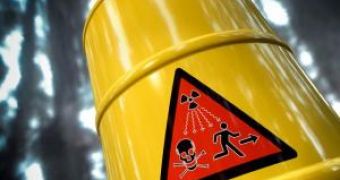Great power comes with great responsibility, a wise man once said. Indeed it does, and nuclear waste is only one of the problems that come along with this great power. Nuclear energy has great potential for electrical energy generation, as it uses relatively small amounts of fuel and converts it into a massive amount of energy and it is environmentally friendly; however, nuclear reactors also generate some nasty byproducts, the radioactive waste, which pose great danger to nature.
Let's see: first of all, radioactive waste emits relatively high amounts of radiation, therefore it can be poisonous and most of the time deadly; secondly, the elements incorporated in such byproducts have half times of up to a couple of million years, thus storing them in underground facilities is not a solution, and, last but not least, there is little that can be done to remove and neutralize the threat posed by the radioactive elements. Nonetheless, not even one of these aspects are currently taken seriously into consideration while discussing the possibility of nuclear energy to become the main source of energy in the near future.
This may bee soon changing, as a team of chemists from the Northwestern University have developed a method that could be successfully used to remove strontium metal from real liquid nuclear waste. Strontium-90 is only one, but the major and most dangerous component resulted in the nuclear fission reaction. According to Mercouri G. Kanatzidis, the remediation process can be carried out through an ion exchange process, which gathers strontium metal and leaves behind clean liquid.
Most of the time, the remediation process is ineffective, as nuclear waste usually contains sodium and calcium, in concentrations that are one million times greater than that of strontium. The funny thing is that the respective elements are not radioactive and are usually captured by the absorbent material, but leave strontium untouched. Now, Northwestern chemists found that a new material, in the form of metal sulfide made of potassium, manganese, tin and sulfur, can react with strontium metal but not with sodium or calcium.
The material, called KMS-1, is extremely effective in the very basic or very acidic solutions, such as nuclear waste, while other materials currently used are very limited on the pH scale, and only work in one of the two mediums, basic or acid, but never in both.
During the experiments, the team developed a solution containing strontium and the two interfering elements, calcium and sodium, in exactly the proportions found in nuclear waste. As the KMS-1 material is being dropped into the solution, the ion reaction exchange starts immediately, taking up strontium metal and releasing potassium, which is also non-radioactive in nuclear waste solutions.
During the nuclear fission reaction process, large amounts of nuclear waste are being produced, stored in large containers, fact that could provide with a solution to collect the radioactive materials, so that the nonradioactive components can be safely released back in nature.

 14 DAY TRIAL //
14 DAY TRIAL //